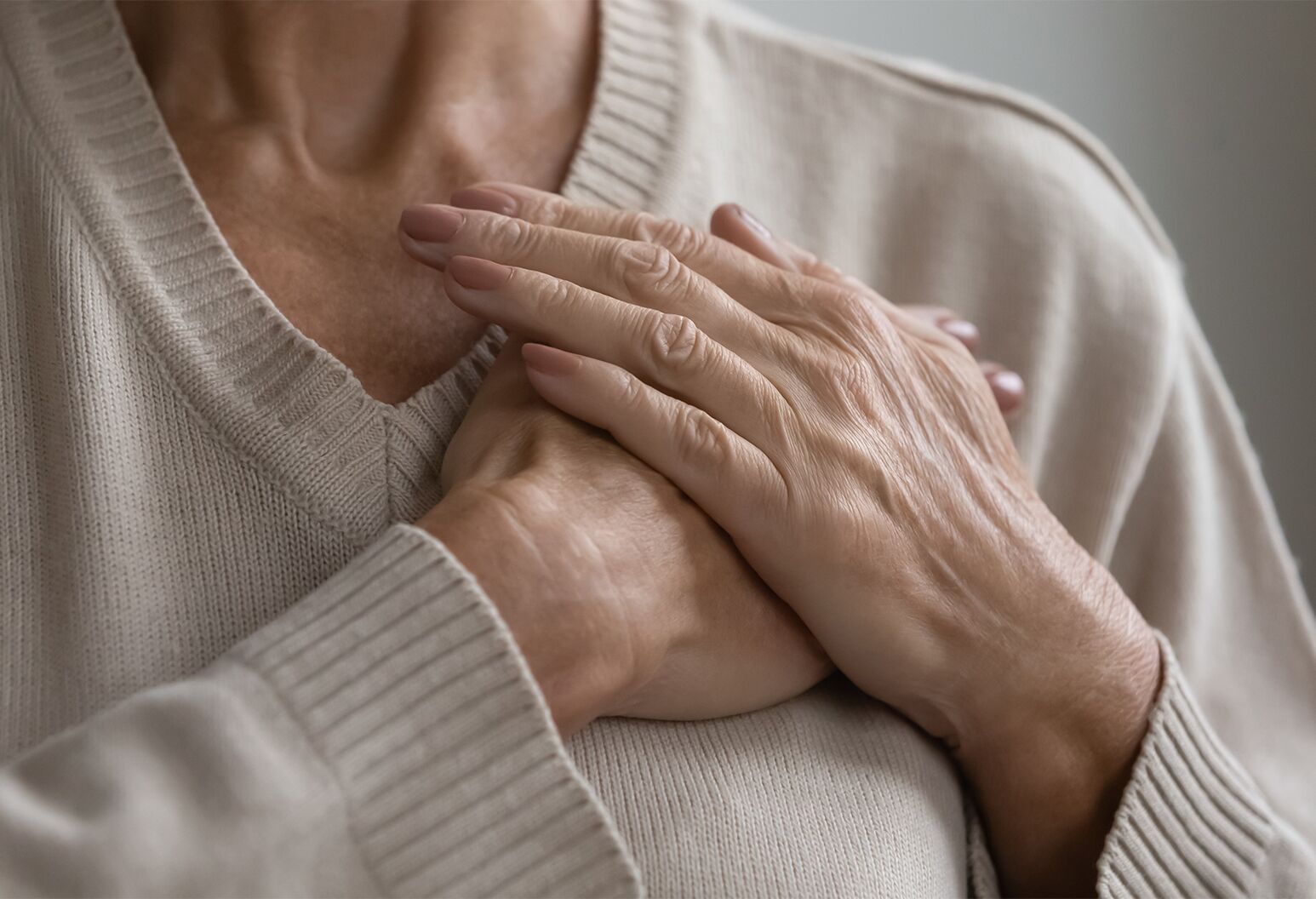heart health
The Biggest Heart-Healthy Diet Myths

An emergency medicine physician shares how to decode acute chest pain from the real deal.
4 min read
I’ve never considered myself a hypochondriac, but lately I’ve been having chest pain that is beginning to make me feel anxious. It’s not debilitating and seems to come and go, but it’s happening enough that I’m worried it may turn into a mild heart attack. I don’t want to overreact, but I also don’t want to ignore these persisting symptoms. Is this the precursor to a heart attack?
Sincerely,
“Racing Heart & Mind”
When it comes to chest pain, you can never overreact. That’s exactly why it’s one of the most common complaints that brings patients into emergency departments (ED) every day. In fact, past research has found that chest pain affects 20% to 40% of the general population during their lifetime.
And while it certainly is scary to experience, it’s important to note that chest pain is not always an indicator of a heart attack. Even if you have corresponding symptoms with your chest pain such as nausea, sweating, severe fatigue, or back, jaw, or arm pain, it could be related to an umbrella condition referred to as acute coronary syndrome (ACS).
When you’re dealing with ACS, there is generally an underlying condition causing reduced blood flow to the heart, such as angina (when you have coronary artery disease or plaques that impede blood flow to the heart, especially upon exerting yourself or dealing with stress, causing severe pain in the chest) or unstable angina. If you’re dealing with a case of unstable angina, this means there has been a change in angina patterns. For example, maybe previously you could walk a few blocks before experiencing chest pain, and now it’s just one block and that pain is much worse.
Like what you’re reading? Subscribe to our newsletter and get the same great content delivered straight to your inbox!
By providing your email address, you agree to receive email communication from The Well.
However, even if you don’t have ACS, the above symptoms can happen because of a gastrointestinal issue like GERD or an esophageal spasm. And in some serious cases, that chest pain could be happening because of a pulmonary embolism or aortic dissection.
The trouble with chest pain is that all the symptoms related to it can be nonspecific—which means your chest pain may be happening because of GERD, angina (which is often a heads up that something with your heart isn’t right), or something much more serious. That’s exactly why there’s no harm in going to the ED to get yourself checked out.
Here’s what you can expect from an ED visit: You’ll start with a vitals check, making sure blood pressure, heart rate, pulse, and oxygen levels are stable. After this, the first test you’ll likely get is an EKG, which is the best way to rule out a heart attack. From there you may get several other tests as you describe what your chest pain feels like and your health history. This can include a CAT scan and X-rays. Once a cardiac event is ruled out, the noncardiac issues are examined, such as GERD and esophageal disorders like achalasia.
Just remember, as we say in emergency medicine, time is muscle, and a delay in getting evaluated and treated could affect your outcome if you are having a heart attack. Plus, while the above are some of the most common symptoms patients come in with, not everyone with chest pain presents the same way—especially if you’re a woman. There are genetic differences that make women who are having a heart attack experience different symptoms, ranging from back pain, fatigue, and even indigestion. This is all to say you know your body and what’s normal for you. If something is off and concerning to you, it’s time for a trip to an ED to rule out a heart attack or serious cardiac concern.
The Well is Northwell Health’s commitment to the future of health care. In this time of information overabundance, much of which is inaccurate, unhelpful, or even difficult to understand, Northwell Health is on a mission to make a difference as an honest, trusted, and caring partner. The site connects with consumers to provide them with personalized content that reduces their stress, makes them laugh, and ultimately feel more confident and capable on their healthcare journey.